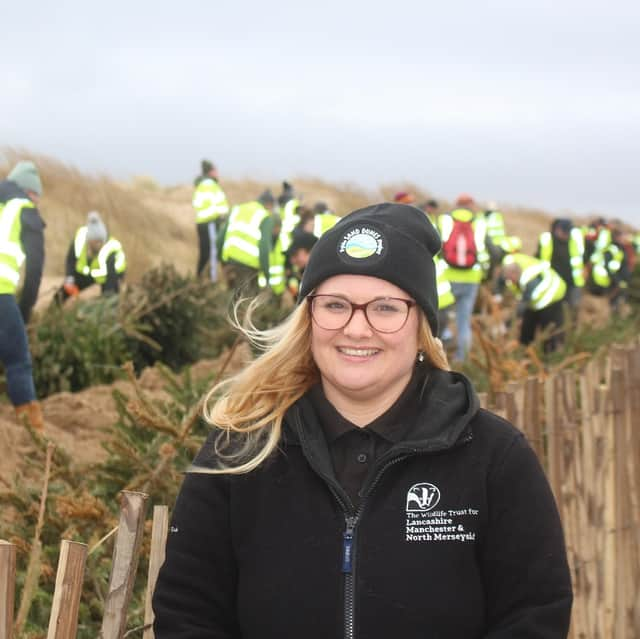Hundreds fight to save the Fylde Coast's sand dunes
and live on Freeview channel 276
Three thousand Christmas trees lie piled up on North Beach car park in Saint Annes.
But help is at hand in the form of Fylde Sand Dunes Project’s annual Christmas tree planting volunteers who have showed up to dig ditches in the sand and plant the trees that were discarded by households across the Fylde Coast and Preston at the end of the festive period.
Advertisement
Hide AdAdvertisement
Hide Ad

Amy Pennington told the Blackpool Lead: "It’s a real balancing act. You never want more volunteers than there are trees to go around.
"This year I was worried so I put out a plea for more Christmas trees which seemed to work.”
Despite harsh winds Antonia Charlesworth Stack notes that some 260 volunteers showed up alongside Pennington - a community engagement officer for the Fylde Sand Dunes Project, to dig ditches in the sand and plant the trees that were discarded by households across the Fylde Coast and Preston at the end of the festive period.
Sand Dunes are increasingly rare in the UK and ours represent 90 per cent of those in Lancashire. Not only are they important for recreation and enjoyment – they’re a unique habitat for wildlife and act as a soft sea defence for coastal towns.
Advertisement
Hide AdAdvertisement
Hide AdBut over the past 150 years the Fylde Coast has lost around 80 per cent of its sand dunes.
READ MORE: I visited Longridge and Whalley in the Ribble Valley after it was named the happiest area in the UK
Amy added: “It’s not due to coastal erosion. It’s because of the building and infrastructure of the towns.
"The dunes would have once extended miles and miles inland before the towns were developed.”
Advertisement
Hide AdAdvertisement
Hide Ad“Sand dune systems tend to move one way or another – they’re either eroding or accreting.
"In Southport they are eroding so they maintain theirs slightly differently. Accretion means sand is blowing onto them.
"In winter they are carved up by storms and then in summer embryo dunes start to form.”
Over the past 150 years the Fylde Coast has lost around 80 per cent of its sand dunes.
Advertisement
Hide AdAdvertisement
Hide AdEd Mooney, from Fylde Ranger services added: "Sand dunes are not a fixed feature of the landscape and naturally shift and change.
"It’s a millennia-long process so eventually they will be eroding and then they’ll be accreting again.
"Fylde is quite unique because it has very long flat sands, so the dunes are not cornered in. It’s a really special landscape for that reason but they are exposed."
To volunteer with the Fylde Sand Dunes Project or to find out about upcoming events, visit their website HERE.
Comment Guidelines
National World encourages reader discussion on our stories. User feedback, insights and back-and-forth exchanges add a rich layer of context to reporting. Please review our Community Guidelines before commenting.